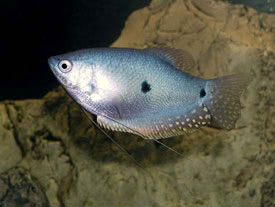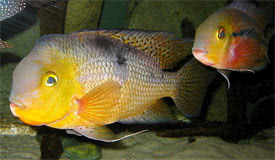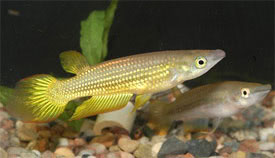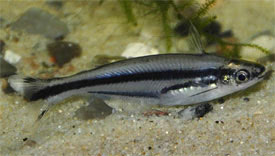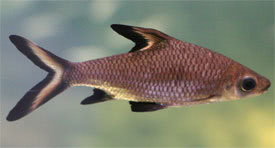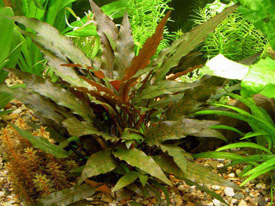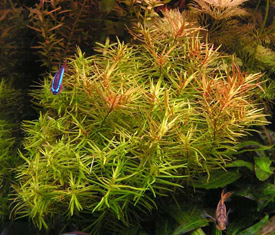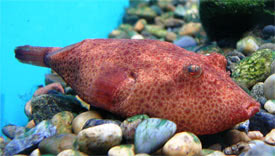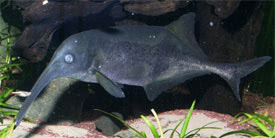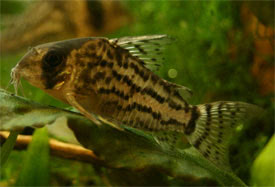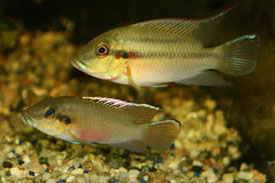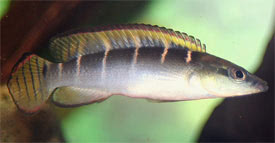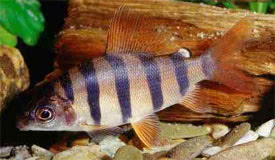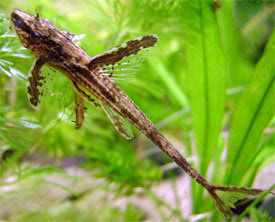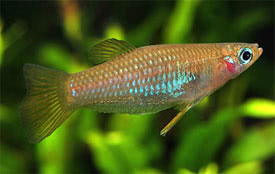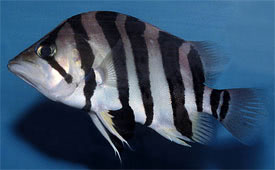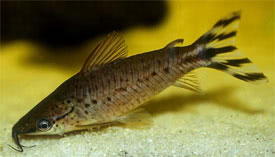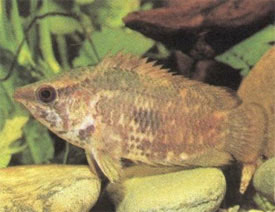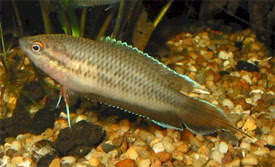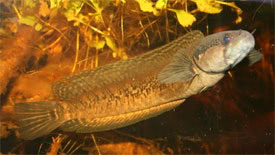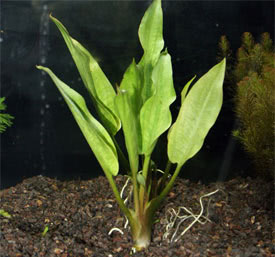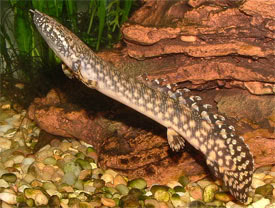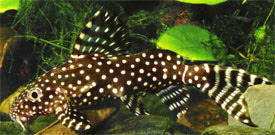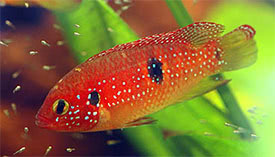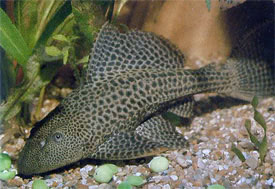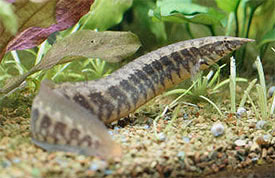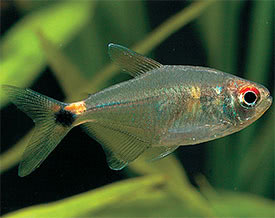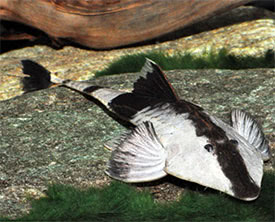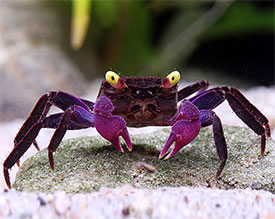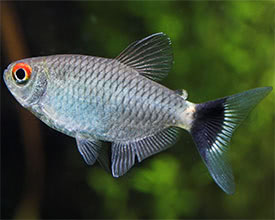
 Magyarul / Hungarian
Magyarul / Hungarian
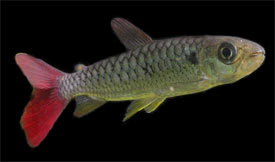
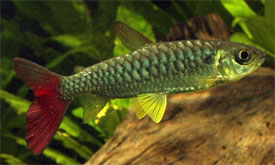
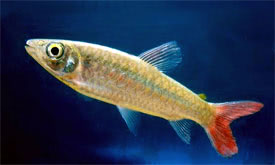
- Scientific name: Chalceus macrolepidotus
- Synonyms: Chalceus ararapeera, Creagrutus pellegrini
- Common name: Pink-tailed Chalceus
- Group: Characins
- Habitat: South America; Colombia, Venezuela, Guyana, Suriname, French Guiana and Peru
- Size: 25 cm
- Biotope: Usually found in highly oxygenated surface areas in large rivers.
- Social behavior: Quite aggressive. Its best kept alone or in a larger group as they tend to fight among themselves in smaller groups. Can be kept with robust cichlids and catfishes in a community tank, but much smaller fish will be eaten.
- Diet: Carnivorous; mainly eats insects and aquatic crustaceans in nature. In aquarium it can be fed with live and frozen foods such as earthworm, tubifex and mussel.
- Breeding: Very rare in aquarium.
- Tank: Minimum 240 litres
- Population: 6-8 fish for 600 litres
- Decoration: It requires a huge tank with plenty of swimming space and a tight-fitting cover as the fish is an excellent jumper. A sandy substrate with a few roots and some floating plants are sufficient.
- Temperature: 23-28 °C
- pH: 6-7.5
- Hardness: 5-18 NK°
- Lifespan: 10-15 years
Description: Pink-tailed Chalceus has an elongated, laterally compressed, pike like body. It has quite large scales on the back, while they become smaller on the head and on the lower regions of the body. The most notable feature of this fish is the bright Pink tail. The base color of the body is silvery with greenish or blue iridescence, while the belly area has a pink hue. The color of the fins can vary from dark red to yellow. The upper part of the iris is orange, and there is a dark spot near the gill cover. In nature they swim in large schools near the surface and have been seen jumping out of the water in pursuit of insects.
The difference between sexes are unknown. There are only a few information about their breeding. It is possible to breed them in a very large aquarium. About 2000 eggs are scattered amongst plants. The young are quite large and can be fed with brine shrimp after their yolk sacs has been absorbed.














